A ground source heat pump is a low-carbon alternative to heating that harnesses natural heat. As the name implies, this heat is taken from the ground, meaning that it’s a renewable heating source.
Extracting heat from the ground is much more sustainable than burning fossil fuels. However, a ground source heat pump is a big investment. You’ll need upfront costs to cover the hefty installation process, but the long-term benefits are efficient heating and savings over time.
As you might imagine, there are lots of other things to consider. We’ve got the lowdown on ground source heat pump pros and cons, a breakdown of costs, grants and schemes available, and saving opportunities associated with ground source heat pumps. We’ll also go into detail about whether or not they’re best for you.
Not sure if this guide is applicable to you? To save you reading on, here’s a quick list of the homes best suited for ground source heat pumps:
- Newbuilds under construction with no heating system yet installed
- Homes currently on inefficient electric, LPG, or coal heating
- Homes with existing underfloor heating
- Well-insulated homes with good EPC ratings
How does a ground source heat pump work?
In order to extract heat, large pipes installed underground transfer ground heat into water via absorption. This water (mixed with anti-freeze) travels through the pipes and is compressed to raise its temperature.
Above ground, this compressed water mixture goes through a heat exchanger to extract the heat and transfer it to the heat pump. From the heat pump, the heated water channels through your home’s heating systems via radiators or underfloor heating. It can also be used to provide hot water from for your taps and showers.
We appreciate there’s a lot of science in there, so here’s a visual to help you understand what it looks like:
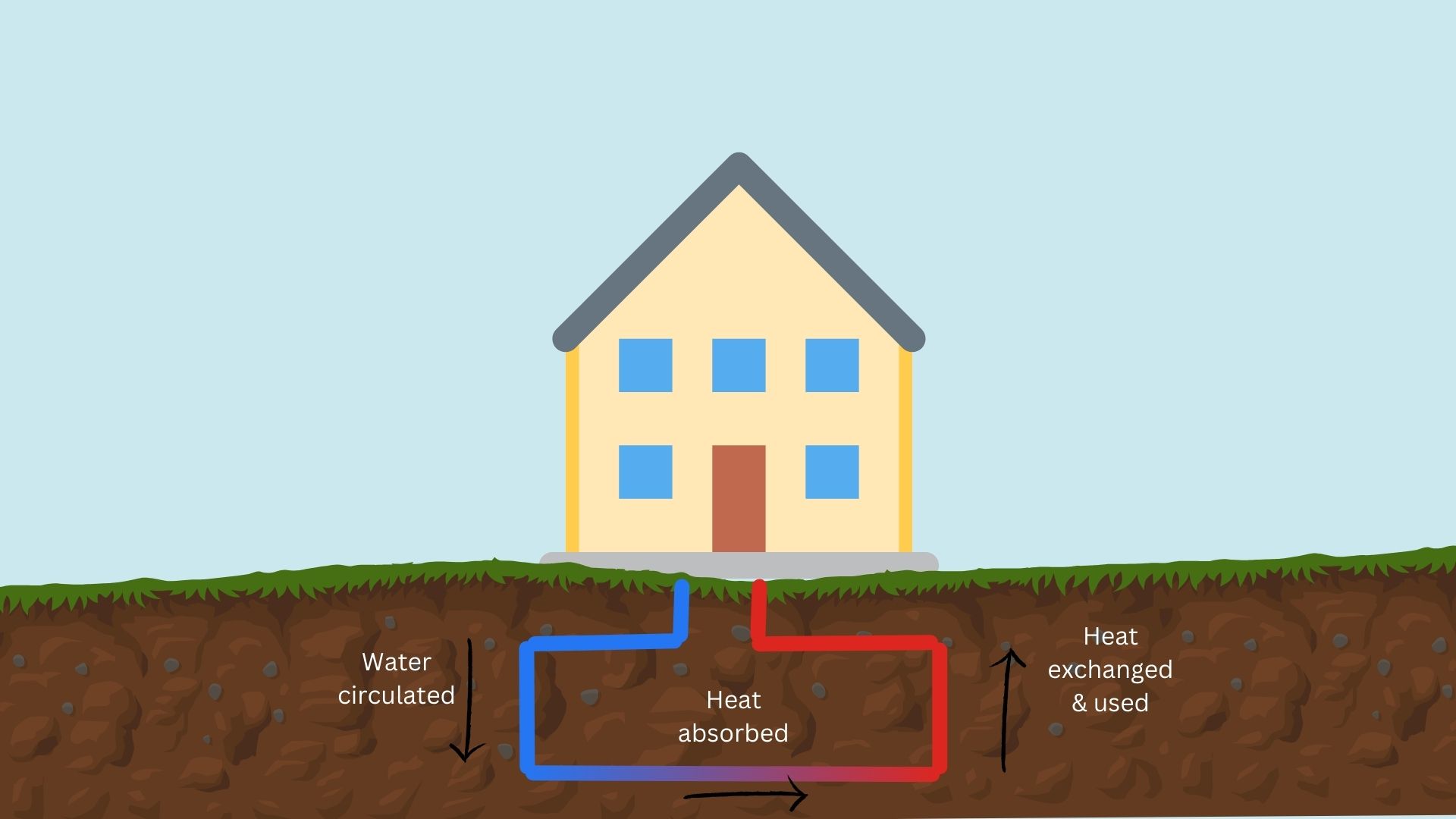
Harnessing natural heat from the ground is much more sustainable than burning fossil fuels. Ground heat remains at a constant temperature throughout the year, so it’s a reliable and renewable source of energy.
Ground source heat pumps still require electricity to run, but for every unit of electricity they use, they produce two to four units of heat. This efficient system makes them a low-carbon heating alternative that means less reliance on fossil fuels.
How much is a ground source heat pump?
Installing a heat pump is an expensive process as there is a lot of equipment needed. This includes the heat pump itself, as well as ground loops, a heat extractor, and labour costs.
The Energy Saving Trust estimates that the cost of ground source heat pump installation is usually around £28,000. If you decide to dig a borehole in lieu of trenches for the ground loops, the cost rises to around £49,000.
Ground loop installation | Borehole installation | Underfloor heating installation | Radiator replacements |
|---|---|---|---|
Up to £28,000 | Up to £49,000 | Up to £8,000 | Up to £300 per radiator |
These are just rough figures based on standard equipment and installation costs. Other considerations that affect the final cost include:
- The size of the heat pump
- The size of your property and its heating requirements
You should also consider the physical disruption that will be caused by the installation process. It can be lengthy, messy, and loud – sorry neighbours!
Factoring in all of the above, it’s a good idea to get quotes from at least three different professional installers before you move ahead.
So how much can you save on energy bills?
Running costs of a GSHP can save anywhere in the region of £65 up to £2,200 a year. Of course, this all depends on the system you currently have.
We’ve used figures from The Energy Saving Trust from October 2023 to compare the annual savings for each type of heating system. These figures compare the running costs of an average ground source heat pump with five different types of systems. The cost ranges factor in old and new boilers or heaters.





Who is it best for?
We touched on this a little at the beginning, so if you’re still reading, let’s go into it in more detail about who benefits most from GSHPs.
Let’s not sugarcoat this: a ground source heat pump is a big investment and it’s not suited for every home. You want to make absolutely sure that your home meets the requirements so that you get the most out of your investment.
You’ll need a large outdoor space
Your property should have a large enough garden or outdoor area where the pipes will be buried in the ground. There are two options: via boreholes (vertically) and via a ground loop system (horizontally).
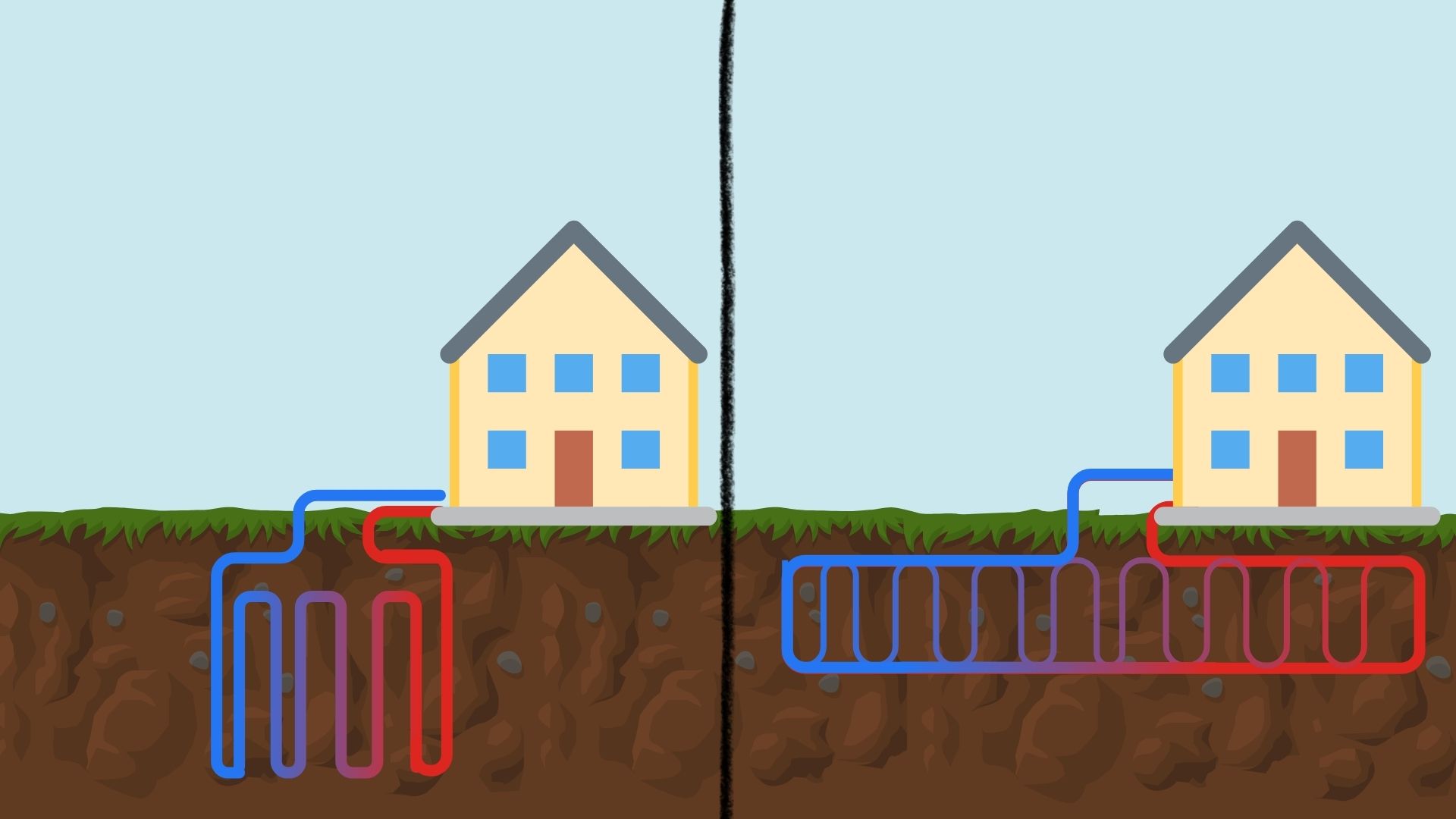
Vertical boreholes (left), horizontal ground loops (right)
It’s recommended to have outdoor space that’s about three times the footprint of your property. Ground loop trenches are the most common option as they’re more economical, although they take up more space. Installing via borehole means less space is taken up but more expensive equipment is required to dig vertically. Wherever you install the pipes, this land cannot be built upon or used for anything else, which can be quite restrictive.
GSHPs are not ideal for homes on gas
Homes that are currently using gas central heating are less suited to GSHPs. Unless your boiler is old and your heating system requires a significant update, you won’t be saving money installing a ground source heat pump.
Good insulation is essential
If your home is older or has poor insulation, your heat will escape more easily. As GSHPs work better at a low temperature, you won’t be benefitting from the expense.
It's really simple: our site takes just 30 seconds when you buy online.
You do the shopping, we'll track your purchase, and then you'll get cashback in your account to withdraw to your bank or as a gift card.
Here's how to get your £15 offer;
- Click: Click the green button
- Join: Create an account
- Shop: Browse brands on our site
- Buy: Click Get Cashback then make a purchase
- Enjoy: We'll add £15 to your account once we track your purchase
How does TopCashback benefit? We make money when you buy from supported brands, which allows us to offer cashback with no hidden fees.
You’ll need space indoors
The heat pump itself goes inside your home, so you need to plan where this should go. The unit is roughly the size of a large American-style fridge and makes about as much noise (ie a low hum). It’s ideally located in a boiler or mechanical room, along with the buffer tank and hot water cylinder.
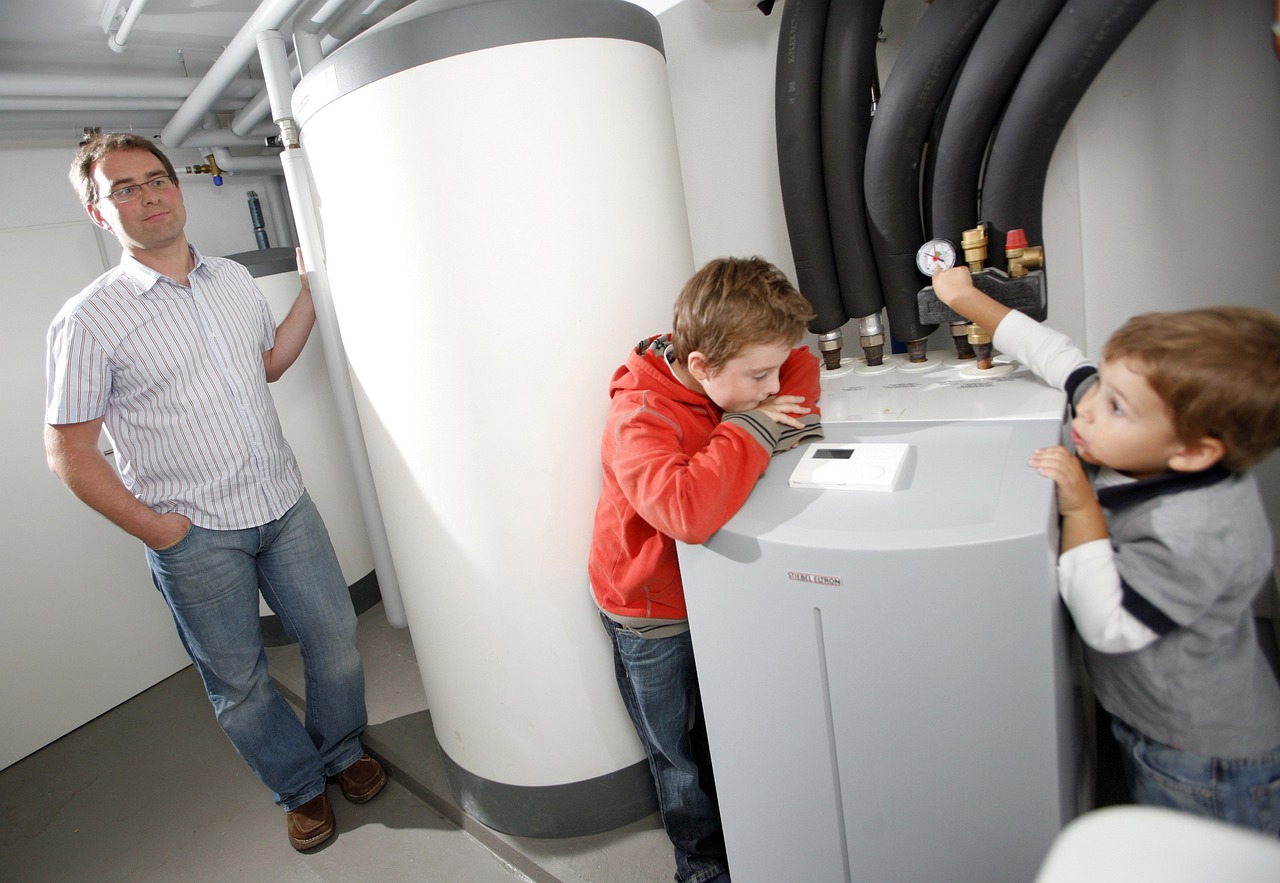
Ideal for a low-carbon alternative
For those looking for less reliance on fossil fuels, GSHPs could be what you’re looking for. If your home ticks the required boxes (or you’re willing to put in the money to meet them), you’ll find your carbon emissions will drastically reduce. You’ll also benefit from low maintenance costs, efficient heating, and savings over time.
GSHPs work best with underfloor heating
If you already have underfloor heating installed, you could be a good candidate for a ground source heat pump installation. GSHPs are most efficient when used at a low temperature, which is exactly how underfloor heating works. If you’re already looking to install underfloor heating, a GSHP could be a good option for your home.
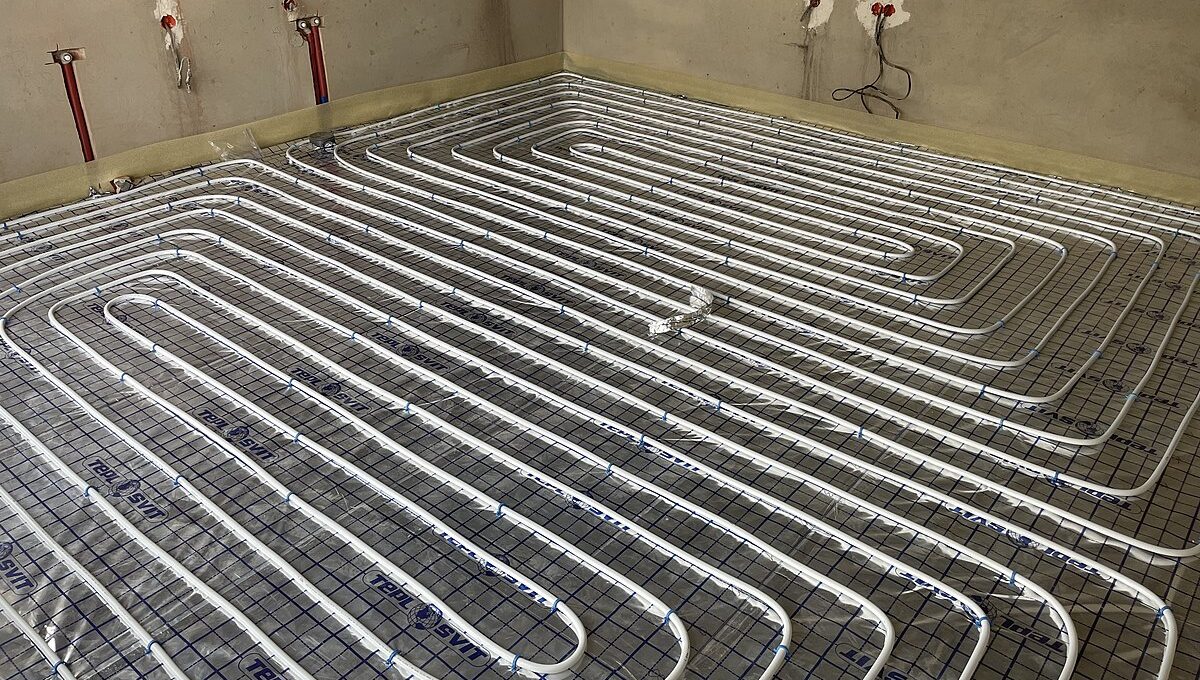
cc by-sa wikimedia commons-viii23dawari
Newbuilds are better suited than older properties
Older properties tend to be larger, not well-insulated, and reliant on gas central heating. All of these factors either increase the price of installing a GSHP or render it ineffective.
Newbuilds are usually smaller, well-insulated, and ready for low-carbon systems like underfloor heating, solar panels, and geothermal heating. A newbuild with underfloor or no current heating system is an ideal scenario.
Is it more sustainable?
GSHPs harness the natural heat from the ground, which is a renewable source. Ground heat remains at a constant temperature throughout the year, so it’s useful even in winter.
While a heat pump uses renewable energy, it also requires electricity to run. This means it’s not 100% renewable or sustainable, but it's significantly more eco-friendly than burning fuel alone.
For every unit of electricity that’s required, as many as four units of heat are produced (an average of two to four). This means an energy efficiency of up to 400%.
Pros & cons of a GSHP
Pro | Con |
|---|---|
More cost-effective over time | Expensive upfront cost (£28K–£49K) |
Generates less CO2 | Not ideal for homes on gas mains |
Can also provide hot water | Not ideal for older properties |
Can be used for underfloor heating | Requires land space |
Qualifies for grants & schemes | Disruptive installation process |
Heats your home efficiently | Still uses some electricity |
Grants & schemes
Before you get put off by the cost of a ground source heat pump, there is good news: you could be eligible for a grant.
In an effort to work towards net zero emissions, the UK Government is investing in funding that encourages homeowners to move towards low-carbon heating options. The Boiler Upgrade Scheme (BUS) means that if you’re a homeowner who lives in England or Wales and wants to install a low-carbon heating system, you could receive funding.
There are three types of eligible heating systems that qualify:
Ground source heat pump
Air source heat pump
Biomass boiler
For a GSHP, there’s £7,500 available to go towards the cost and installation as of October 2023. To be eligible for the grant, you’ll need to meet certain requirements.
Own your home or small business property
Live in England or Wales
Have an older property (no newbuilds)
Switch from fossil fuel boiler to low-carbon heating system
Have a valid Energy Performance Certificate less than 10 years old with no insulation recommendations
Have an installation capacity of 45kWth
Work with an MSC-certified installation professional
Not previously received any energy grants
MSC-certified installers will apply for the grant. Once you’ve shopped around for quotes and settled on an installer, they will tell you if you’re eligible. Together you’ll agree on a quote and the installer will apply for the grant, the amount of which will be deducted from your agreed quote.
If you live in Scotland, the Home Energy Scotland Grant means you could be eligible for up to £10,000 if you meet certain eligibility requirements. These include living in a home with a poor energy rating and a household that includes a benefit recipient.

Save money at 5,000+ top-named brands
Ground source heat pump FAQs
There’s a lot of in-depth detail in this article, so if you just want a quick answer to a quick question, we get it.
Do GSHPs work in winter?
Yes. The earth retains a stable temperature year-round, which is what makes GSHPs so effective.
What are the downsides of a GSHP?
High upfront cost (£28,000–£49,000), large outdoor space required, disruptive installation process.
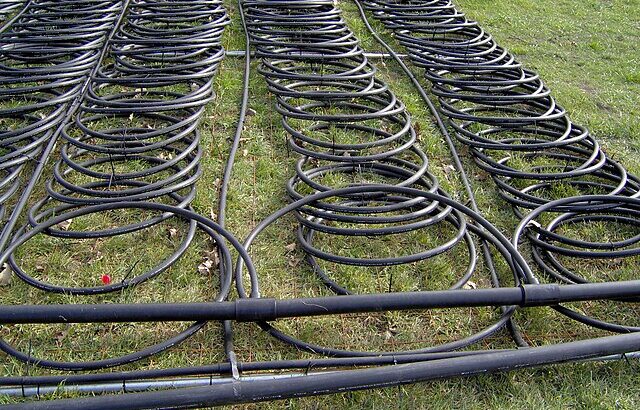
Do GSHPs use a lot of electricity?
No. They have a very high efficiency rating; for every kW of electricity they use, they produce 2-4 kW of heat.
Do I need new radiators for a GSHP?
Possibly. GSHPs work best with radiators that have a low flow temperature of 45℃–50℃. If used at a flow temperature above this, the efficiency is significantly reduced (and the running costs increased).
Can I use ground source heat pumps and solar panels together?
Yes. Using solar panels to provide the electricity needed to run a GSHP means you can achieve zero emissions when heating and cooling your home.
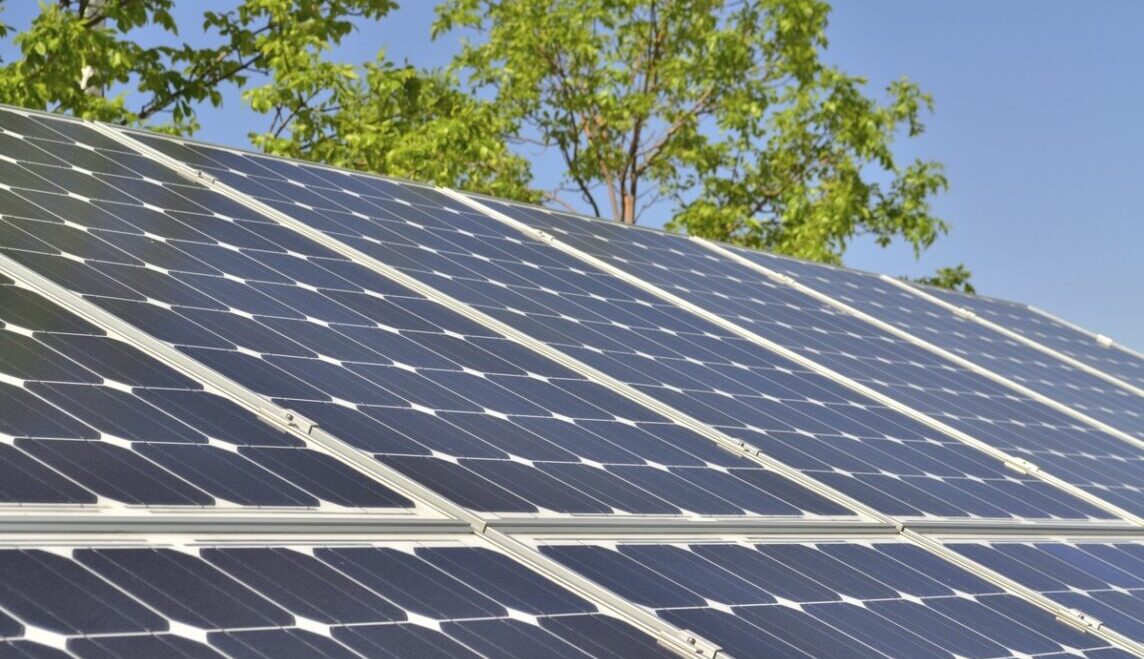
What is the life expectancy of a ground source heat pump?
Usually, 20+ years if it’s well maintained with yearly services.
How much land do you need for a ground source heat pump?
Around three times the footprint of your property.
Are heat pumps noisy?
No. They operate at around 40–60 decibels, which is the equivalent of a quiet fridge.
Which is better: ground or air source heat pump?
Ground maintains a more consistent temperature than air, making it more efficient and reliable. They also have a longer lifespan as they are less exposed to the elements.
Is a ground source heat pump for you?
We hope this guide has answered your questions so you have a clearer idea of whether this option is for you. Here are some key takeaways to remember:





